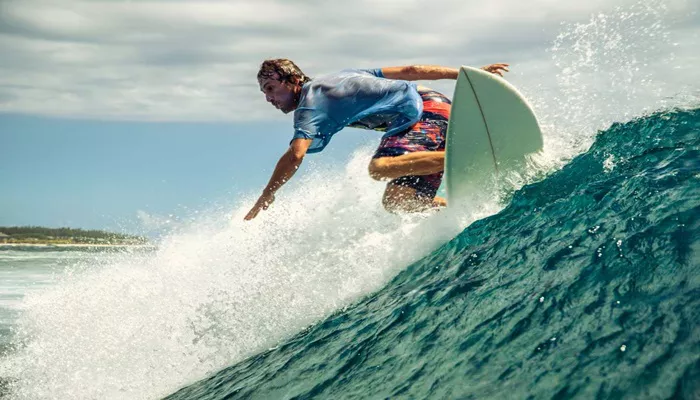Surfing is an exhilarating sport that combines skill, strength, and a deep connection with nature. One of the most crucial elements of surfing is balance. Without proper balance, a surfer cannot ride the waves effectively or safely. In this article, we will explore why balance is essential in surfing, how it affects performance, and ways to improve it.
What Is Balance in Surfing?
Balance refers to the ability to maintain a stable position while moving. In surfing, balance is vital because surfers must stand on a board that is constantly shifting due to the movement of water. A surfer’s center of gravity plays a significant role in maintaining this balance. The center of gravity is the point where the weight of the body is evenly distributed. When a surfer shifts their weight, they can control their movement on the board.
The Role of Balance in Riding Waves
When riding a wave, a surfer must adjust their body position to stay upright. Waves are unpredictable; they can change shape and size quickly. A surfer who can maintain balance can react to these changes without falling off the board. Here are some key aspects of how balance affects wave riding:
Stability on the Board: A balanced surfer can keep their body centered over the board. This stability allows them to absorb the energy of the wave rather than being thrown off by it.
Control During Turns: When a surfer wants to turn, they need to shift their weight. Good balance helps them execute these turns smoothly without losing control.
Paddling Efficiency: Before catching a wave, surfers paddle out to the lineup. Maintaining balance while paddling helps conserve energy and prepares them for when they need to pop up and ride.
Adapting to Wave Conditions: Different waves require different techniques. A balanced surfer can quickly adapt their stance and body position based on the type of wave they are riding.
The Physics of Balance in Surfing
Understanding some basic physics can help explain why balance is so important in surfing. When a surfer stands on a board, they create a system that needs to be stable. Several forces act on this system:
Gravity: This force pulls the surfer down toward the water. The surfer must counteract gravity by keeping their center of gravity low and centered over the board.
Buoyancy: The surfboard floats on water due to buoyancy. A balanced surfer ensures that their weight is distributed evenly so that the board remains stable and does not tip over.
Momentum: As surfers ride waves, they gain speed and momentum. A balanced stance allows them to manage this momentum effectively, enabling smoother rides and better control.
Common Balance Challenges in Surfing
Surfers face various challenges that can disrupt their balance:
Wave Size and Power: Bigger waves have more force, which can easily unbalance an inexperienced surfer.
Board Type: Different surfboards have different shapes and sizes, affecting how easily a surfer can maintain balance.
Body Positioning: Incorrect posture or stance can lead to instability.
For example, leaning too far forward or backward can cause a surfer to fall.
Environmental Factors: Wind, currents, and other surfers can create unpredictable conditions that challenge balance.
Techniques for Improving Balance in Surfing
Improving balance is essential for any surfer looking to enhance their performance. Here are some effective techniques:
1. Strength Training
Building core strength is vital for maintaining balance on a surfboard. Exercises such as planks, squats, and lunges help strengthen the muscles used for balancing.
Planks: Hold a plank position for as long as possible to engage your core.
Squats: Perform squats while focusing on keeping your knees aligned with your toes.
Lunges: Forward lunges help improve stability and strength in your legs.
2. Flexibility Training
Flexibility contributes significantly to balance. Stretching exercises can help improve your range of motion and prevent injuries.
Yoga: Practicing yoga enhances flexibility and core strength while promoting body awareness.
Dynamic Stretching: Incorporate dynamic stretches before surfing to warm up your muscles.
3. Balance Exercises
Specific exercises target balance directly:
Balance Boards: Use a balance board at home to simulate surfing conditions.
Single-Leg Stands: Practice standing on one leg for as long as possible; switch legs for an equal workout.
Foam Rollers: Stand on a foam roller or BOSU ball to challenge your stability further.
4. Mindfulness and Focus
Mental focus is just as important as physical training when it comes to balance.
Meditation: Practicing mindfulness meditation can improve concentration and body awareness.
Visualization Techniques: Visualize yourself riding waves successfully; this mental practice helps reinforce physical skills.
The Connection Between Balance And Safety
Safety is paramount in surfing, and maintaining balance plays a significant role in preventing accidents:
Falling Safely: A balanced surfer knows how to fall correctly if they lose their footing, reducing the risk of injury.
Avoiding Collisions: Good balance allows surfers to maneuver quickly away from other surfers or obstacles in the water.
Controlling Speed: Surfers who maintain balance can better control their speed when riding waves, reducing the likelihood of wipeouts.
Conclusion
Balance is an essential skill for any surfer looking to enjoy this thrilling sport fully. It affects every aspect of surfing—from paddling out to riding waves and even falling safely when necessary. By understanding the importance of balance and implementing techniques to improve it, surfers can enhance their performance and safety in the water.
Whether you are a beginner learning how to stand on your board or an experienced surfer looking to refine your skills, focusing on balance will undoubtedly lead to more enjoyable and successful surfing experiences. So grab your board, hit the waves, and remember that maintaining your balance is key to unlocking all that surfing has to offer!
Related topics:
- How to Pivot Skateboarding: A Step-by-Step Guide
- 15 First-Time Bungee Jumping Tips
- How Much Money Can You Make as a Skydiving Instructor?

